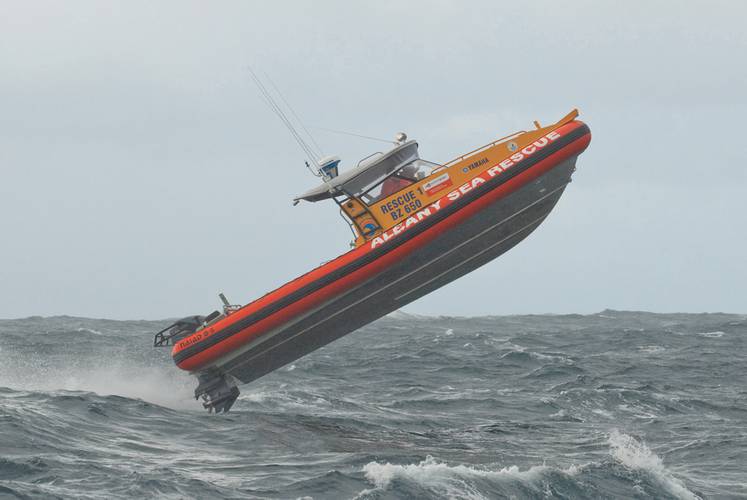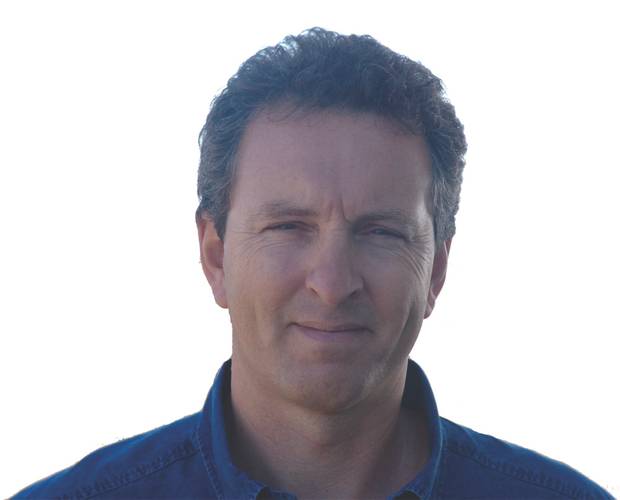The Weakest Link
As High Performance Boats Evolve Man Is The Weakest Link
The world is changing fast and this is especially true in the fast boat sector. Since the millennium, rigid hull inflatable boats (RHIBs) and high speed craft (HSC) have been at the cutting edge of maritime operations for everything from homeland security and law enforcement to extreme weather rescue.
For over 30 years specialist organizations around the world including the RNLI (UK lifeboat), Royal Marines, US Navy and US Coast Guard have driven the evolution of fast craft. They know what has worked in the past and know what boats they want for the future. The questions when selecting a new boat used to be simple - how long, how many engines and what type of fuel? Naval architects and boat builders rose to the challenge, producing high performance boats in aluminium, FRP and composites engineered to withstand the resulting forces.
Although maritime organizations use RHIBs and HSC to perform a wide range of operations the consistent objective is that crews and passengers arrive safely at their destination ready to do a job, or in some cases ‘fit to fight.’ With the arrival of unbreakable boats plus a surplus of engine power, man is the weakest link. As boats get lighter and faster it is time to step back from pure technology gains to consider the individuals who have to go to sea in rough conditions and put themselves into harm’s way. The big question for the next generation of boat builders is - how do you build fast boats that protect the crew from injury?
As part of the ‘changing world’ scenario there is now a move away from large ships to fleets of high performance small craft. The numerous roles are shared between RHIBs, foam collar craft and hard boats. A RHIB has air filled sponsons, a foam collar craft has closed cell foam filled sponsons attached to an aluminium, FRP or composite hull. The main advantage of foam is that it can be cut, perforated or shot but will not deflate. Hard boats do not have a collar. Open boats up to 30 ft. (9 m) are selected for launching from larger craft, patrolling coastlines, law enforcement, fisheries inspection, ship boarding plus inshore search and rescue roles. Boats over 30 ft. may have a cabin and are selected for extended patrolling, maritime security, plus offshore search and rescue roles.
In the commercial sector fast response craft are now used for many traditional ‘displacement’ roles including pilot boats, dive boats, crew boats and offshore support. Tasks range from boom deployment, environmental sampling and hydrographic survey to fire fighting. All these roles require people, time is money and fast transport of personnel is a core commercial objective.
Extreme high speed craft are constantly evolving as counter-terrorism and enforcement roles change in the military, coast guard and police sector. Top speeds are rarely disclosed for extreme operations craft which may have ballistic protection and stealth characteristics to reduce radar and heat signature. An Interceptor needs to combine high speed performance, excellent sea keeping characteristics and most importantly protection for the crew.
Professional RHIBs and HSC can be powered by up to four outboard engines. Multiple inboard diesel engines can be combined with stern drive, water-jet or surface piercing propellers. In the past the US marine industry approach to engine size was install maximum horsepower then use the engines at lower revs, with plenty of power in reserve. Modern engines are designed to be used at higher revs so downsizing is part of reducing weight, increasing range, reducing fuel bills and improving environmental footprint.
Patrolling may be at low speeds, interception is not. Hull and equipment breakages used to limit how fast and for how long a boat could run in rough seas. To run multi engine rigs at full power pro users discovered that they needed stronger steering systems, more responsive throttles, high performance exhaust systems plus drives that transfer horsepower into thrust. The high performance components industry that evolved from the racing and go fast community has developed engineering upgrades that are suitable for professional sector boats. The old technology limits and breakages that helped to protect the crews are gone.
The professional sector now needs a shock mitigation strategy or crews will not be capable of doing their job when they arrive at their destination. The definition of shock mitigation is, 'to make a violent collision or impact less intense.' With an effective shock mitigation strategy the helmsman, crew and passengers benefit from increased comfort and reduced injury while the organisation has increased operational efficiency. Technical shock mitigation solutions need to include efficient hull forms, responsive controls, ergonomic work station layouts and improved crew seating. Training coxswains and crews to understand the forces involved and to work with, not against, the sea should be the basis of any fast boat operation.
Besides many roles in the military and commercial sector RHIBs make excellent personnel carriers. With modern inboard and outboard engines top speeds can exceed 60 knots which can be anywhere from exciting to dangerous for passengers. Fortunately professional boats have an expected cruising speed and optimum fuel range, most operate in the 30 to 40 knot range with top speed as a rarely used option. Operators also need to identify what sea conditions could be encountered during open sea transits, then ensure that the type and size of craft are suitable for the purpose. With correct craft and equipment selection professional RHIB and HSC operators can maximize crew performance, increase sea time and protect employees from injury.
Seating on fast boats needs to provide a good ergonomic position for helmsman, crew and passengers. Seat designs should allow space for PPE, lifejackets, webbing and sometimes body armor. From watching the evolution of high performance seating over many years it is interesting to see the diversity of potential seating solutions. In the past the US had more hard boats and padded leaning posts were the usual seating. In Europe there were more RHIBs and padded jockey seats, also known as straddle seats, were the norm.
Due to higher operational speeds many organizations using RHIBs and HSC are now realizing that they need to specify suspension seats to give adequate protection to personnel. Tolerable discomfort is now an expression that can be measured! The objective of a suspension seat is to isolate the occupant from the effects of vibration and impact at sea. RHIB and HSC suspension seating may have ‘feet on’ or ‘feet off’ the deck. Seat and suspension designs are constantly evolving to meet the users changing requirements. Suspended decks and helm stations are now available that suspend instruments, controls and seating in one unit.
Computers have been part of digital GPS navigation and chart plotters for many years. ECDIS type systems can be miniaturized and waterproofed. Next generation electronics include camera systems with laser imaging that is designed for use on fast, open boats. But what about the crews that need to use these systems - can they read them and more importantly can they operate them?
Experienced boat operators know that the combination of excellent components and equipment creates an excellent craft but it is people that make it work. Human factors need to be considered for all electronics tasks performed on a planing craft. Are the buttons big enough? Is the font size readable? Touch screens work on land but do they work at night with one hand holding a grab rail and the other wearing gloves?
In some situations the potential for injury is simply so high that you have to take the man off the boat. The maritime world is starting to realize that an unmanned craft may be the ultimate shock mitigation solution. Computer gaming skills are used to fly unmanned aircraft but there are still many challenges for unmanned surface craft, including the international regulations for preventing collision at sea that requires vessels to keep a look out at all times. Crews avoiding collisions on their own craft should still be the best lookouts.
International maritime policy needs a culture of shared information, plus crew training that encourages interoperability. Many tasks benefit from shared information between law enforcement, customs, border and rescue agencies. The modern law enforcement boat crew needs access to the same information that their colleagues have in a police car. The military have had tough mil-spec computers for many years and within the next year marine grade laptops, tablets and smart phones will be standard equipment on professional boats.
Looking to the future, navies and coast guards around the world will make financial, environmental and operational decisions to use fewer ships and more boats. RHIBs and HSC will become even faster, multi-role craft with the same systems that are found on a ship’s bridge. These craft will have modular design features that allow then to vary their layouts for different mission profiles. To keep the oceans safe, professional boat coxswains and crews will need to develop specialist skills to operate fast response craft effectively in this rapidly changing environment.
www.frc-wbv.com
www.vibrationdirective.com
The Author
John Haynes, AFNI, is Operations Director of FRC Internationaland a presenter of WBV courses. He is a Yachtmaster Ocean and Advanced Powerboat Instructor. Subject matter expertise includes high speed craft consultancy, product development and specialist training.
Email: [email protected]
(As published in the November 2012 edition of Maritime Reporter - www.marinelink.com)




















